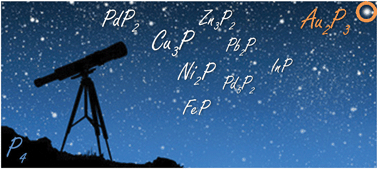Towards nanoscaled gold phosphides: surface passivation and growth of composite nanostructures†
Abstract
Gold phosphide (Au2P3) is known as a crystalline metastable phase at the macroscale. In this paper, the formation of Au2P3

* Corresponding authors
a
Laboratoire de Chimie de la Matière Condensée, Collège de France, UPMC, CNRS, Paris, France
E-mail:
clement.sanchez@college-de-france.fr
b
Laboratoire Hétéroéléments et Coordination, Ecole Polytechnique, CNRS, Palaiseau, France
E-mail:
mezailles@chimie.ups-tlse.fr
c Institut de Physique et Chimie des Matériaux de Strasbourg, UMR 7504 CNRS – Université de Strasbourg, 23 rue du Loess, 67034 Strasbourg, France
Gold phosphide (Au2P3) is known as a crystalline metastable phase at the macroscale. In this paper, the formation of Au2P3

 Please wait while we load your content...
Something went wrong. Try again?
Please wait while we load your content...
Something went wrong. Try again?
S. Carenco, I. Florea, O. Ersen, C. Boissière, N. Mézailles and C. Sanchez, New J. Chem., 2013, 37, 1231 DOI: 10.1039/C3NJ41037D
To request permission to reproduce material from this article, please go to the Copyright Clearance Center request page.
If you are an author contributing to an RSC publication, you do not need to request permission provided correct acknowledgement is given.
If you are the author of this article, you do not need to request permission to reproduce figures and diagrams provided correct acknowledgement is given. If you want to reproduce the whole article in a third-party publication (excluding your thesis/dissertation for which permission is not required) please go to the Copyright Clearance Center request page.
Read more about how to correctly acknowledge RSC content.
 Fetching data from CrossRef.
Fetching data from CrossRef.
This may take some time to load.
Loading related content
